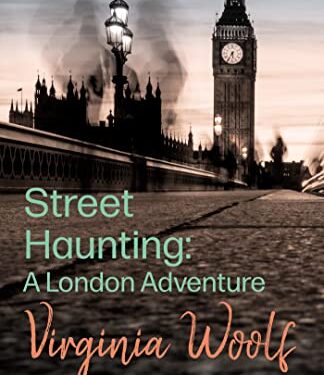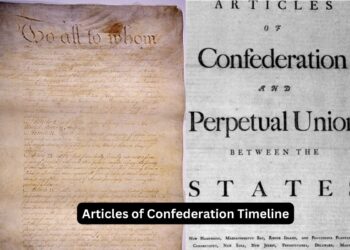“Street Haunting: A London Adventure” is an essay written by Virginia Woolf, first published in 1927. In this essay, Woolf explores the theme of urban solitude and the subjective experience of wandering through the streets of London.
Street Haunting Essay Summary By Virginia Woolf-The essay begins with Woolf stating her intention to leave her house and venture out into the city on a winter’s evening. She describes the motivations behind her decision, highlighting the allure of anonymity and the opportunity to observe the lives of others. Woolf argues that going outside and immersing oneself in the city’s atmosphere can stimulate the imagination and provide valuable insights into the human condition.
Street Haunting Essay Summary By Virginia Woolf-As she embarks on her “adventure,” Woolf describes the sights, sounds, and sensations she encounters along the way. She vividly depicts the various city scenes she passes by, from the bustling shops to the foggy streets, creating a sense of both the familiar and the unknown. Woolf uses these observations to delve into the inner lives of the people she encounters, imagining their thoughts, desires, and secrets.
Also Read-
- A Modest Proposal Essay Summary By Jonathan Swift
- Mother Tongue Essay Summary By Amy Tan
- In Bed Essay Summary By Joan Didion
- Such, Such Were the Joys Essay Summary By George Orwell
Street Haunting Essay Summary By Virginia Woolf-Throughout the essay, Woolf interweaves personal reflections and philosophical musings. She contemplates the nature of reality and the complexity of human perception, emphasizing the subjectivity of experience. She also reflects on the role of gender in public spaces, touching on the restrictions placed on women’s movements and the liberating aspects of anonymity in the city.
“Street Haunting: A London Adventure” is not a conventional narrative with a clear plot or conclusion. Instead, it is a lyrical exploration of the sensory and psychological dimensions of urban life. Woolf’s prose style is rich and introspective, blending fiction and non-fiction elements to create a contemplative and atmospheric piece of writing.
Street Haunting Essay Summary By Virginia Woolf-Overall, the essay invites readers to contemplate the power of observation, the allure of solitude in the city, and the ways in which the external world can shape our internal experiences. It serves as a literary exploration of the complexities of human existence and the transformative potential of urban environments.
About Virginia Woolf
Virginia Woolf (1882-1941) was a renowned British writer and one of the most influential figures in 20th-century literature. Her innovative writing style, introspective exploration of human consciousness, and feminist perspectives continue to captivate readers and scholars alike. Born Adeline Virginia Stephen on January 25, 1882, in London, Woolf came from a highly literary and intellectual family, which greatly influenced her development as a writer.
Street Haunting Essay Summary By Virginia Woolf-Growing up, Woolf was surrounded by the intellectual discussions and literary pursuits of her parents, Sir Leslie Stephen and Julia Prinsep Duckworth Stephen. Her father was a renowned author and critic, and her mother was a well-known Pre-Raphaelite model and philanthropist. Virginia was the third of their four children and had three half-siblings from her father’s previous marriage.
Woolf’s childhood was marked by tragedy and loss. Her mother died when she was just 13 years old, and her beloved half-sister, Stella Duckworth, passed away two years later. These early experiences of loss and grief profoundly impacted Woolf’s emotional and psychological development and became recurring themes in her later works.
Street Haunting Essay Summary By Virginia Woolf-Despite not receiving a formal university education, Woolf was an avid reader and gained knowledge through her father’s extensive library. She was introduced to a wide range of literary works, including classics, contemporary novels, and works of philosophy, which helped shape her intellectual and artistic sensibilities.
In 1904, Woolf’s father died, leaving her and her sister Vanessa with a substantial inheritance. This financial independence allowed Woolf to pursue her passion for writing and engage in the intellectual and artistic circles of the time. Alongside her sister, Woolf became a central figure in the Bloomsbury Group, a collective of artists, writers, and thinkers who sought to challenge traditional conventions and explore new artistic forms.
Street Haunting Essay Summary By Virginia Woolf-During the early years of her writing career, Woolf contributed articles and reviews to various publications, including the Times Literary Supplement. She also wrote short stories, which were later collected and published in “Monday or Tuesday” (1921). These early works showcased Woolf’s experimentation with narrative form and her distinct style of writing.
Woolf’s breakthrough as a novelist came with the publication of her first novel, “The Voyage Out,” in 1915. The novel, inspired by her own experiences traveling to South America, explored themes of self-discovery and the limitations imposed on women in society. It laid the foundation for her subsequent novels, which delved deeper into the complexities of human consciousness and the subjective nature of reality.
Street Haunting Essay Summary By Virginia Woolf-One of Woolf’s most celebrated works, “Mrs. Dalloway,” was published in 1925. The novel takes place over the course of a single day in the life of Clarissa Dalloway, an upper-class woman in post-World War I London.
Through the use of stream-of-consciousness narrative technique, Woolf provides insights into the thoughts and emotions of her characters, exposing the inner lives that often go unnoticed. “Mrs. Dalloway” is considered a groundbreaking work of modernist literature for its innovative approach to storytelling and its exploration of themes such as identity, time, and the impact of societal norms on individuals.
Street Haunting Essay Summary By Virginia Woolf-Woolf’s next major work, “To the Lighthouse,” published in 1927, further solidified her reputation as a literary pioneer. The novel, set on the Isle of Skye, Scotland, is divided into three sections. The first section delves into the characters’ thoughts and perceptions, the second centers around a visit to the lighthouse, and the third explores the passage of time and the legacy of the characters. “To the Lighthouse” is a profound meditation on memory, the passage of time, and the subjective nature of reality.
Conclusion
“Street Haunting: A London Adventure” is a beautifully crafted essay by Virginia Woolf that delves into the experience of venturing into the streets of London. Woolf’s exploration of urban solitude, the power of observation, and the subjective nature of human perception captivates readers and encourages them to reflect on their own experiences in bustling city environments.
Street Haunting Essay Summary By Virginia Woolf-Through her lyrical prose, Woolf captures the essence of the city, painting vivid pictures of its streets, shops, and foggy atmospheres. She intertwines her observations with imaginative musings on the lives of the people she encounters, delving into their thoughts and emotions. In doing so, she emphasizes the interconnectedness of individuals and the endless stories that unfold in an urban landscape.
Furthermore, Woolf incorporates philosophical reflections on reality, perception, and the gendered aspects of public spaces. She touches on the restrictions placed on women and the liberating aspects of anonymity in the city, providing thought-provoking insights into societal dynamics.
Street Haunting Essay Summary By Virginia Woolf-While “Street Haunting: A London Adventure” lacks a conventional plot or definitive conclusion, its power lies in its ability to evoke a sense of wonder and contemplation in readers. Woolf’s essay invites us to appreciate the beauty and complexity of everyday life and to recognize the transformative potential of our surroundings.
In essence, Woolf’s “Street Haunting: A London Adventure” serves as a poetic exploration of urban existence, urging us to engage with our surroundings, embrace solitude, and find inspiration in the ordinary. It is a timeless piece of writing that continues to resonate with readers, reminding us of the profound connections between our inner worlds and the external environments we navigate.
FAQ.
Q: Who is the author of “Street Haunting: A London Adventure”?
A: The author of “Street Haunting: A London Adventure” is Virginia Woolf.
Q: When was “Street Haunting: A London Adventure” published?
A: “Street Haunting: A London Adventure” was first published in 1927.
Q: What is the genre of “Street Haunting: A London Adventure”?
A: “Street Haunting: A London Adventure” is an essay, blending elements of fiction and non-fiction.
Q: What is the main theme of “Street Haunting: A London Adventure”?
A: The main themes explored in “Street Haunting: A London Adventure” include urban solitude, the subjective experience of the city, the power of observation, and reflections on gender and public spaces.

















